#aztec economy
Text
Uncertain estimates cloud the Aztec economy, but we glimpse a vibrant society with gendered roles, diverse crafts from farmers to featherworkers, and all sustained by the common folk's harvest of corn, beans, and tribute.
0 notes
Text
Kimitake Hiraoka was the sacrificed and the character he invented and lived in, Yukio Mishima, was the sacrificer. The moment the sword entered the belly, the two became one and the beheading is the sacrifice that was required by Bataille’s Acéphale.
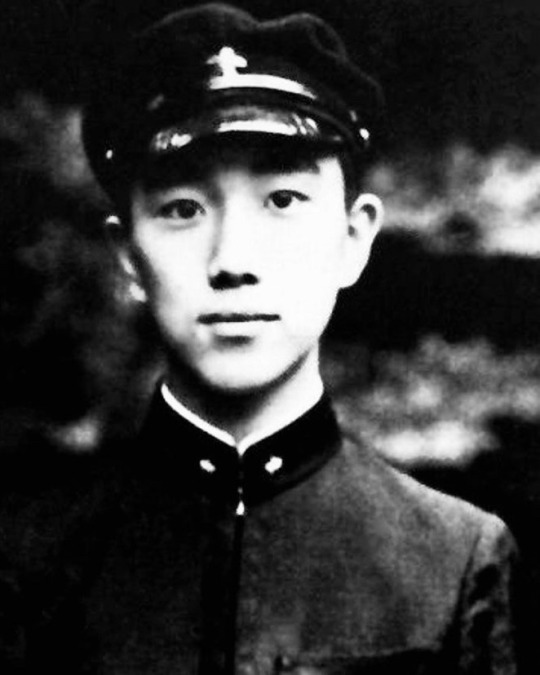

“The Victim, Sacred and Cursed
The victim is a surplus taken from the mass of useful wealth. And he can only be withdrawn from it in order to be consumed profitlessly, and therefore utterly destroyed. Once chosen, he is the accursed share, destined for violent consumption. But the curse tears him away from the order of things; it gives him a recognizable figure, which now radiates intimacy, anguish, the profundity of living beings.
Nothing is more striking than the attention that is lavished on him. Being a thing, he cannot truly be withdrawn from the real order, which binds him, unless destruction rids him of his "thinghood," eliminating his usefulness once and for all. As soon as he is consecrated and during the time between the consecration and death, he enters into the closeness of the sacrificers and participates in their consumptions: He is one of their own and in the festival in which he will perish, he sings, dances and enjoys all the pleasures with them. There is no more servility in him; he can even receive arms and fight. He is lost in the immense confusion of the festival. And that is precisely his undoing.
The victim will be the only one in fact to leave the real order entirely, for he alone is carried along to the end by the movement of the festival. The sacrificer is divine only with reservations. The future is heavily reserved in him; the future is the weight that he bears as a thing. The official theologians whose tradition Sahagún collected were well aware of this, for they placed the voluntary sacrifice of Nanauatzin above the others, praised warriors for being consumed by the gods, and gave divinity the meaning of consump-tion. We cannot know to what extent the victims of Mexico accepted their fate. It may be that in a sense certain of them "considered it an honor" to be offered to the gods. But their immolation was not voluntary. Moreover, it is clear that, from the time of Sahagún's informants, these death orgies were tolerated because they impressed foreigners. The Mexicans immolated children that were chosen from among their own. But severe penalties had to be decreed against those who walked away from their procession when they went up to the altars. Sacrifice comprises a mixture of anguish and frenzy. The frenzy is more powerful than the anguish, but only providing its effects are diverted to the exterior, onto a foreign prisoner. It suffices for the sacrificer to give up the wealth that the victim could have been for him.
This understandable lack of rigor does not, however, change the meaning of the ritual. The only valid excess was one that went beyond the bounds, and one whose consumption appeared worthy of the gods. This was the price men paid to escape their downfall and remove the weight introduced in them by the avarice and cold calculation of the real order.” - Georges Bataille, ‘The Accursed Share: An Essay on General Economy’ (1949) [p. 59 - 61]

#bataille#georges bataille#mishima#yukio mishima#sacrifice#accursed share#acephale#acéphale#tatenokai#general economy#general economics#aztecs
14 notes
·
View notes
Text
Spider-man!Hobie Brown x Reader
Side note: I did my best to keep reader gender neutral for everyone 🫶😍. Also made it more friendly than flirty. 😔 sorry y’all. (Basically more platonic, BUT if I make another I may make it romantic.)
Summary: Just reader and Hobie hopping dimensions and taking out bad guys.
Warnings: None? A little violence ig. Just reader and him bickering. Not proof read 🙁 I got lazy as hell.

“Yo Hob, where’s my mask at?” You asked as you watched yourself in the mirror. Your tooth brush sudsy with toothpaste as you quickly brushed at your teeth.
Crashing with Gwen and Hobie was certainly a risky decision to make, but with you always traversing the multi-verses you never stayed anywhere for too long. Which is why you were staying with the two. Well, staying with Hobie. Gwen was currently out on the hunt for a new anomaly, and you were eager to get to work with her.
“Didn’t you leave it on the couch?” He responded as he slipped his ripped leather jacket over his shoulders. The man was already geared up and ready to go. “I don’t know, that’s why I’m asking you.” You retorted with the roll of your eyes. You soon rinsed your mouth out with water and tossed your toothbrush into a cup. As you went to exit the bathroom, you took notice of the lack of toilet paper (courtesy of living with two other people), and sighed. “We need more toilet paper Hobie, we’ve already run out.”
He peeked his head throw the doorway, taking a glance at what you had mentioned and laughed. “Ain’t that something. We’ll buy some from a different universe, I’d rather not provide to this crappy economy. Now hurry it up mate, we’ve already got a mission.” You scoffed at his stubbornness as you headed towards the cluttered living area. Per-usual, it was a mess. But you didn’t have time for that now. You dug under piles of junk and gadgets until finally you got your hands on your mask. “Ew..” You grumbled as you stared at the ink stain on the side of your mask. Shooting a look towards Hobie, he only returned it with a grin before pulling his mask over his face.
“We’re cleaning this place up when we get back. Now let’s go.”
The two of you departed, a portal appearing in front of you. The dynamic shapes and colors had grown to be something of a norm to you, though you couldn’t say the same as you hopped through it and shot through the tunnel. It still managed to twist and turn your stomach up.
-
“I believe this is the place.” Hobie chimed as the two of you clung to a building side. “Ya think?” Hobie only chuckled at your sarcasm, having already grown quite used to it.
The evening sunset was almost as mesmerizing as the large mountain of houses. They followed along a road that spiraled all the way down to where they stood. It was like staring up at a giant version of the Aztec temples. “Sometimes I forget how different these universes can be. Alright Hobie, you know who we’re looking for so lead the way.”
He gave you a pat on the back before shooting out a web and pulling himself in the air. You could only smile at his playfulness and follow his movements, now swinging yourself towards the top of the mountain. The area was vibrant with warm colors, reds, blues, and green accenting the bright gold of the buildings. You’d been to plenty of universes, but none quite as beautiful as this. Smells of food, and seasonings flooded your nostrils, as well as the chattering of the busy streets. “Cool innit? Went here once with Gwendy, was a little preoccupied though.”
“With?” You questioned as you worked your way to the top of the mountain.
“This wild variant of the lizard. He was huge! More of a crocodile I’d say.” His enthusiastic attitude seemed to infect you, another smile creeping it’s way onto your face. “That sounds cool as hell. Yo is that who we’re looking for?” Your eyes widened as your spider sense raised your alert. Up ahead stood a large statue, though unlike usual statues, this one was moving. It worked at ripping a large jewel that stood at the very top of the mountain. Hobie, who had been swinging backwards, spun around, the lenses of his mask widening. Then they narrowed. He pulled his guitar from over his shoulder, holding it in one hand as he swung himself towards the golden statue. “Taking that as a yes.”
You webbed the side of two buildings, tugging at the webbing and slingshotting yourself towards the chaos. “I’ll get its legs, you- do whatever. I know you don’t like to listen.” You huffed out.
“You know me so well, love.” He said as he went to taking out the giant. You went to do the same, now swinging your webs around the statues legs. While at first your idea was working, the giant seemed to have a mind of its own. It ripped the webbing in half, but in doing so lost its balance. It tumbled, falling backwards and heading straight for the edge of the cliff. You tried not to panic, and Hobie was now joining you in stopping the giants potential destruction of the golden city. You worked at making a canopy between two poles, the wide wall of webs ready to catch the giant in its grasp.
Hobie stood at the top of a building, webs shot out to slow the giants fall. He strained, pulling back at the web lines. And it worked. The giant was caught in their web.
The two of you met up, now standing in the orange dirt with a victorious look. Then you glanced at one another. “High five?”
Their hands met, the sound of victory ringing in their ears. “High five. Hell yeah Y/N!” His arm found its way around your shoulders, tugging you closer as he spouted jokes. However, you interrupted, “We still have to clean up when we get back.” Hobie’s jubilant expression turned unamused, and he sucked his teeth sighing at your seriousness.
“We really gotta loosen you up love. Now let’s get this guy back in his universe.” His thick accent made it difficult for you to comprehend at first, but once you did, you nodded. The two of you had completed your mission, unscathed, and with time to spare. You were certainly impressed with your efficient work.
258 notes
·
View notes
Text
Avocado orchards had carpeted the gently undulating hills around the sacred lake of Pátzcuaro with stodgy green bushes. Here, before the cataclysmic arrival of the first envoys dispatched by Hernando Cortes from the Aztec capital over the mountains to the East, [...] the Purépecha had sown maize, amaranth, zucchini, cacao, cotton, tomato, beans, a dozen types of chili, and much more.
Now the monotonous “green gold” of the avocado boom had colonized the entire Mexican state of Michoacán. [...] [I]t was shocking to think that the cause of the disaster was America’s great patriotic party: the National Football League’s Super Bowl. A flurry of advertising creativity on behalf of the Mexican avocado was unleashed every year during the multi-million-dollar sports broadcast. [...] “Is your life just terrible?” asks the comic actor Chris Elliott, star of Scary Movie 2 and Scary Movie 4, in the 2019 spot. “You deserve more! Spread an avocado on top of everything!” [...] A few days before the Super Bowl, the domestic diva Martha Stewart [...] had released on social networks her latest recipe for guacamole [...]. Guacamole was now an obligatory snack for the 100 million or so Americans who watched the Super Bowl. In February of 2017, 278 million avocados -- most of them from Michoacán -- had been sold during the days before the game in [the US] [...].
---
The avocado had become the star product of Mexican food production in the age of the North American Free Trade Agreement (NAFTA) [...] since NAFTA was signed in 1994 [...]. [Mexican] farmers produced 16 times more than the formerly dominant Californian growers. [...] Moreover, the avocado was now classified as a “superfood” [...].
It had not always been like this. In the 1950s, the avocado was known unsentimentally as the crocodile pear [...]. Imports from Mexico were banned until 1997 [...] . When complete liberalization was announced in 2007, Michoacán had become an unbeatable competitor for the Californian avocado growers. The Mexican producers specialized, like their Californian rivals, in the Hass variety of avocado, more meaty than those that the Purépecha had [...] consumed over the millennia, and with a tough skin that protected the pears during long hauls in chilled container trucks to El Paso or Tijuana and then beyond to the big US consumer markets. [...] [T]he Hass avocado was perfectly suited to the global market [...]. Michoacán, whose crystalline lakes had earned it the name of the “land of fish” in the indigenous language of Tarasco, would never be the same.
By 2020, 80 percent of the avocados consumed in the United States came from Michoacán [...].
---
Now in the 21st century, on the outskirts of Uruapan, the frenetic capital del aguacate, the new economy of agribusiness took shape [...]. Further west on the shores of Lake Pátzcuaro, the monoculture had not yet colonized the entire landscape, but the advance of the avocado seemed unstoppable. [...] “Practically everybody here wants an avocado orchard [...],” explained [FFB], a resident of the Purépecha indigenous community of Jarácuaro on the shores of the lake. [...] [H]e was horrified by the extent of environmental destruction. “They pump water from the lake to water the avocado orchards [...]. It’s pillage. [...]”
The falling water level, together with the introduction of the rapacious predator tilapia, had wiped out almost all the [...] [native] fish species. Of the cornucopia of marine life that had fed the Purépecha cities, only the diminutive silvery charal remained. The same occurred at other great freshwater deposits in Michoaczán. [...] The Purépecha communities on the shores of the lake, a landscape of stunning beauty where dense pine and ilex oak forests met white nymphaea lilies floating on turquoise water, were girding themselves for the arrival of the aguacateros, avocado producers [...].
---
“They put a gun to your head and tell you to sign the deed before the notary. That’s how the transfer of land is agreed upon,” explained [GV], a sociologist at the University of San Nicolas de Hidalgo in Morelia [...].
Meanwhile, large exporters and avocado brokers -- some of them international brands like Del Monte -- were profiting by purchasing from producers at dirt-cheap prices and reselling to the US supermarket chains at very attractive ones. “They pay a dollar per kilo of avocado here and sell it for eight at a Minnesota W*lmart,” said [GV].
In order not to squander such a reliable source of profits, “transnational corporations, just like the Canadian mining companies in Zacatecas, pay the extortion money [...],” he continued.
---
Text by: Andy Robinson. Gold, Oil, and Avocados: A Recent History of Latin America in Sixteen Commodities. 2021. [Bold emphasis and some paragraph breaks added by me.]
333 notes
·
View notes
Text
The weird thing about the debate on Israeli's indigenousness is that "indigenous" doesn't mean... you're From somewhere. You can stop being indigenous; you can stop being indigenous while still existing in the place your ancestors were born. "Indigenous" isn't that you have the memory of belonging to a place or notice little cultural things in your family that tie into your ancestral homeland. I mean, there's a reason we don't call British people in Britan indigenous.
Indigenousness is about perpetual opposition to settler colonialism, which is about the complete uprooting of a pre-existing culture and forcing that land to accommodate an extractivist, export economy. That's what it is. It's not about being from a place or even having a """tie to the land.""" (The "tie to the land" is definitely an element of indigenousness but it's really just a romanticized simplification of indigenousness — a simple answer for why indigenous people are at the frontline of environmental movements.)
When the Spanish came to Mexico, they worked with the noble Nahua people to de-indigenize them. They did this by converting them to Catholicism, teaching them European writing (Latin) and academics, and relying on the Nahua nobility to help enforce the new political system. Fransicans are usually credited with converting Mexico to Christianity, but the ones who did most of the work were the young, Nahua "niños del monasterio" who marched into the villages and burned the idols of the gods — of both their own and other indigenous communities. (Nahua soldiers are credited with being the ones who helped the Spanish conquer the rest of Mexico's native people).
Indigenous/mestizo scholar Chimalpahin wrote about the history of the "Aztecs" by calling every Nahua god a demon, by positioning the Spanish like a good development and by arguing his specific Nahua city was better than the other by appealing to Spanish sentiments. ("But maybe he was just speaking to the Spanish!!!" He wrote in Nahuatl for presumably a Nahua audience.) (Academics don't agree on whether to call him indigenous).
"Chimalpahin and the noble Nahuas were violently forced into assimilating into Spanish nobility; you are sick for trying to argue that they weren't indigenous anymore." I'm not arguing that they weren't, but they were players in de-indigenizing Mexico, and it's important that it was forced.
De-tribalization and de-indigenization are always violent and ugly; you don't lose your indigenousness, usually, because you're evil. Chimalpahin and the noble Nahuas were still victims and horribly traumatized. They were also enforcers of de-indigenization.
Anyway, I'm mestizo and have ties to central Mexico and feel a sense of belonging there, at times. I'm not indigenous to it though. The memory of any indigenousness in my family is just a memory now. We visit, and I eat so so many poblano peppers. But we've detribalized, become borderline settlers by participating in capitalism, lightened our skin through generations, probably intentionally (many Mexicans have heard the phrase that we have to "better our race"). If I wanted to actually reconnect, it would be a lot of work; any reconnecting indigenous person can tell you how much work it is.
I know people get really prissy about how "You can't compare Israelis to white European settlers in America because we actually have a connection to the land!!!! We are actually from there!! >:/ some of us are not even white!"
Well let's think of the majority brown mestizo (mixed) population of Mexico. Are they indigenous because they might have "ties to the land" and because they have lineage from it?? Maybe they were once, but for the majority now — no. Without a mass effort to oppose settler colonialism and reconnect, mestizos are not indigenous and might never be again, no matter how much of their pre-colombian culture persists in our quieter traditions and language. And the Mexican state is happy to co-opt aesthetic representations of indigenousness, to talk about our glorious "Aztec" ancestry, while actively hurting indigenous populations.
So assume some, or lets say all!, Israelis have every possible connection to the land (lets say they love the olive trees and cry over the murder of all the Nile crocodiles), maybe they're visibly non-white, maybe they can trace their lineage to the exact spot where they stand. But if they're on the side of a settler colonial, capitalist state (say it was even forced on them!! say they were even made to move there!!! say they are like the Nahua nobles) — how indigenous are you?
How much longer will you remain " indigenous " ???
#would like to add that of course Jews have every right to live in Palestine (migration and returning to the homeland is always cool)#but the hijacking of indigenous sentiments by a nation state (capitalist & western-friendly) is not only well documented but pretty horrifi#sorry for this rant but i feel like im actually losing my mind with this talk#yeah we can make fun of the blonde and blue eyed Israelis (especially the South African converts) for larping but#genuinely the first step to de-indigenize is to align yourself with capitalist powers (even if forced)#palestine#mine#also i will lock this post if anyone starts bugging me too much because i dont really have the energy to spend the day debating#maybe ill even delete this
29 notes
·
View notes
Note
https://www.tumblr.com/mochinomnoms/750399534369275905/your-talk-about-museums-and-ancient-artifacts
No no, please, do tell about the agriculture of Mexico! They made islands for agriculture?? What type of products grew on them? How did they work??
Do you have any recommendations of sites or works to see more of it?
Also you should see the type of economy Incas had, like, they didn’t have a writing system; which is why keeping languages like Quechua really complicated, and their economy was more family based? It’s kinda complicated to explain for me but it’s more akin to trading than anything modern in my opinion.
Chinampas! They're very cool and a super ingenious method of agriculture that doesn't affect the rainforest around them but utilizes the lakes! I'll be using this and this as my main source to reference.

"Chinampa system is an historical system adapted to face hydrologic and climatic constraints and the pressure by the high city’s food demand. The chinampa farmers have been able to handle certain balance between the sustained yield and the environmental and technological management factors. This ecosystem performance has been based on the biological stability improvement, including sophisticated farming methods such as multiple cropping and shift of crops."
As you can see, they're man-made and developed by the Mexica (Aztecs) in the 14th century in the lakes of Xochimilco and Chalco, which surround Lake Texcoco, the lake that Mexico City takes residence in.

They're best described as “floating gardens” and due to the nutrient rich materials used to built them, are very fertile and can grow a great variety of crops. This of course includes Mexico's staple crop of maiz, but also beans, squash, tomatoes, chili peppers, and even flowers. The chinampas system provides a built-in natural irrigation system, and were home to aquatic wildlife and birds. This benefits the system further, as these animals increase the fertility and nutrients in the water and soil. There was also a drainage system, which facilitated the movement of water and sediments!
There were some cultural practices in association with chinampas, but they're best associated with the sort of 'urbanization' that Tenochtitlan was going under as the Mexica grew.
There have been much more recent studies done on the chinampas system, as modern agriculture as we know it is highly unsustainable due to lack of land and the general environmental concerns around agriculture. Utilizing chinampas in modern agricultural system has several benefits which include space efficiency, biodiversity, sustainable water management, carbon sesquention (migating climate change), and community engagement.
The last is particularly important, as it involves local communities in food production and builds on the concept of 'third-spaces' for people. Third spaces are typically places that individuals can spend time with their communities without the need to spend money for services or products. Libraries are the best example of this, but there have been others that have been lost over time.
This is not to say that chinampas don't exist anymore! They very much due primarily in San Gregorio, Xochimilco, Mexico City. THere are also some in San Luis, Tiahuac, and Mixiquic.


Other countries around the world have been inspired by chinampas, such as the Floating Gardens of Bangladesh, the Green Float project in Osaka Bay, Japan, and the Urban Rivers project in Chicago, USA.
There are some difficulties in maintaining current chinampas and bringing them back, as many of the original lakes were drained by the Spanish which reduced their ability to support agriculture. Earthquakes have also damaged them and the canals, as well as the scarcity of fresh water, pesticides, climate change, urban development, and water pollution.
I've gone on a bit long now, but I am familiar with the Inca and Quechua communication system you are referring to! It's a system based on knots if I'm not mistaken! I might be inclined to go into that in a future date!
#mochi asks#professor mochi#chinampas my beloved#nowadays theyre a popular tourist attraction#i think ryan and shane even went to a haunted one during buzzfeed unsolved
12 notes
·
View notes
Note
What are your fav random (could be significant or insignificant) premodern historical facts, one for each continent?
Well, I don't know for sure about my FAVORITE favorites, but these are some people/events that I find interesting. We'll skip Europe just because I'm always for more focus on the global premodern world, and for studying ancient and medieval Africa, Asia, America, Oceania, etc. more closely. Too many people still think that "the medieval world' was only confined to Europe, which is.... yeah, not true. Also, I picked two facts for each region, just because.
The Americas
The huge settlement of Cahokia, which sits just outside modern-day St. Louis, is just one of many flourishing pre-Columbian metropolises where Native Americans lived in large, advanced cities. Native culture and civilization in the Americas is also much, much older than you probably think.
A fifteenth-century Aztec king, Nezahualcóyotl, wrote one of my favorite lines of existential philosophy ever, mulling on the question of whether humans had souls and if there was life after death: Do flowers go down to the realm of the dead? The simplicity and poignancy is hard to forget, especially since it comes from a member of a world and a culture scoured totally out of existence by the conquering, colonizing Spaniards.
The Middle East and Central Asia
One of the oldest named individuals in history is the 23rd-century-BC Sumerian priestess, princess, and poet Enheduanna. Obviously she is much older than even antiquity, but I still think it's cool that we have a record of a woman that far in the past.
Ibn Sina/Avicenna, the 9th/10th century Islamic polymath, lived in Bukhara and Samarkand, in modern-day Uzbekistan. My favorite anecdote about him, aside from the fact that he is believed to have written almost 500 books (only half of which, alas, survive), is that one day, he bought a copy of Aristotle's Metaphysics and read it forty times in a row, after which he still didn't understand it. He was deeply disgruntled, until he found an annotated commentary edition that explained it (he was very happy about this). So next time you read a classic and don't get it, please know that one of the smartest men who has ever lived also used the SparkNotes.
Eastern Asia
One of the world's very first novels, at least we know of, was written by a 11th-century Japanese imperial handmaiden, Lady Murasaki Shikibu. It's called The Tale of Genji, and you can get a free English translation if you want to read it. The internet, man!
The 14th/15th century Chinese admiral and adventurer Zheng He made seven legendary treasure-hunting voyages across the world, rather like the fictional Sinbad. He was also originally born to a Muslim family, since Islam has had a long presence in China.
Africa
The 14th-century king of the Empire of Mali, Mansa Musa, was probably the richest man who ever lived. He spent so much gold on his 1324 hajj to Mecca that he inadvertently crashed the Egyptian economy. He was also a patron of the intellectual capital and center of learning in the city of Timbuktu, which held one of the finest collections of manuscripts and scholars in Africa.
The 16th/17th century Angolan queen Nzinga of Ndongo and Matamba is likewise a total badass who ruled for almost 40 years, fought Portuguese colonizers (and won), and is likewise someone that more people should know about.
Oceania
The aboriginal culture of Australia is SO FUCKING OLD, and its history is preserved largely through the exact memorization and recital of detailed oral traditions for thousands of years, that we actually have accurate eyewitness accounts of the end of the Ice Age, meteor strikes, the rise of ancient sea levels, and more. If you don't think that is unbelievably mind-blowing amazing, I have no idea what to tell you.
Likewise, incredibly sophisticated Polynesian navigation enabled the construction of flourishing ancient Pacific societies connected across oftentimes thousands of miles of open ocean, passed down in part by oral tradition and part by techniques such as stellar navigation, study of wave patterns, bird migrations, and other cues from the natural world. They traveled everywhere in their double-hulled canoes, including possibly as far as Antarctica and to their indigenous brethren in the Americas.
245 notes
·
View notes
Text
Submitted via Google Form:
What might I need to take into account when I have multiple very large swaths of land being reclaimed? I'm talking large-scale projects, it would be comparable to having the waters between Great Britain and Ireland being reclaimed.
Licorice: If you want to learn about how to reclaim land from the sea, nobody knows more than the Dutch. Sources concur that around 17% of the Netherlands has been reclaimed from the sea, and according to wikipedia, which has an article dedicated to Dutch land reclamation, a quarter of the country would be under water if not for their continued maintenance of dykes, canals, and the the rest of the system. The Dutch have been reclaiming land from the sea since the Middle Ages, so they make a fascinating case history of what can be done as technology evolves - and also, of course, how need drives technological innovation, since necessity is the mother of invention.
Here’s a short article from the Royal Society of Chartered Surveyors on some recent reclamation projects. You can find out more by researching the ones that are closest to the kind of project you envisage for your world.
https://ww3.rics.org/uk/en/modus/natural-environment/land/out-of-the-deep--7-massive-land-reclamation-projects--.html#:~:text=Land%20reclamation%20has%20been%20happening,from%20the%20sea%20or%20lakes.
One thing you’ll need to consider is what the land is going to be used for. Preparing reclaimed land for agriculture takes longer, I think, than reclaiming land for high-density human occupation. If it’s reclaimed from the sea there will be a degree of saltiness that needs to be removed before standard food crops can be grown.
The Aztec city of Tenochtitlan might also be an interesting study for you. If I recall correctly, Tenochtitlan was a massive floating city made of artificial islands, rather than reclaimed land per se, and the water was fresh rather than salt, so a different situation from that of Holland.
Tex: So the Irish Sea, which sits between England and Ireland, has a width of 200 km, surface area of approximately 46,000 square km, a depth between 80 and 275 meters, and a water volume of 2,800 cubic km (Wikipedia). There’s other bodies of water technically between the two islands, but this one is eponymous and holding to the classical definition of a sea, so I figure it’s the best example to have on hand.
Where is that much water going? Where are you getting that much dirt? Is this going to adequately match up to the soil and rock compositional layers of the islands bordering it? Will this be, relevantly, earthquake-proof (i.e. will the dirt stay where you put it)? What organisms are being deprived of their environment by these changes? How will this change water movement overall, and will it negatively impact the islands’ shape and their inhabitants’ well-being by unexpected rearranging of waterways?
What about the economy? This is a major change in trade routes, and a lot of money presumably being sunk (ha) into changing topography. What prompted this? Is this the best solution for the given problem? Was there a problem in the first place that even needed solving, much less to this degree of influence? What do the local populations think of this? How will this affect the climate and ecology of surrounding areas (say, France)?
Wootzel: We were a bit confused about what you meant when you first sent in this question, so if the above answers aren’t what you’re looking for, please feel free to re-ask and clarify!
8 notes
·
View notes
Text
Savages of the ancient worlds were far smarter than us. The average person now looks at the people that have been fucking us over for years and failing us repeatedly and say: "Well it sure is complicated with this global economy, I can't understand it and I just want to keep voting for these same people because they have degrees and they've been doing it for years."
The Aztecs, or Pacific islanders, or whomever, any of them at this point would have said "you fuck up and no crops for 3 years, you are a traitor that angers the gods, you die on big rock now!" And then tied these assholes to a sacrifice slab and brained them with a big stick covered in teeth or sharp rocks.

191 notes
·
View notes
Text
Flag of the Kingdom of Leon
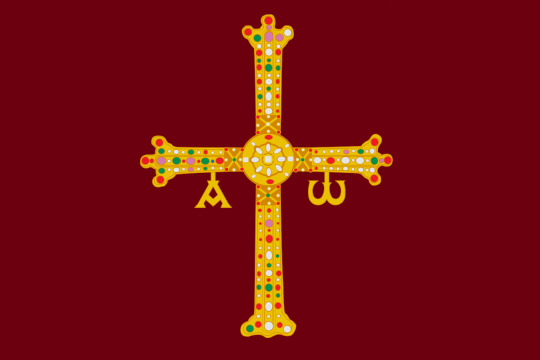
This is the flag of the Kingdom of Leon. It comes from a world where the Reconquista failed and most of Spain remained under Islamic rule. For many years Leon was forced to pay protection money to Al-Andalus. However, after a while they were able to appeal to their powerful Christian neighbors for support. For many years, the boarder of Western Europe was considered to stop at the Pyrenees Mountains. The Iberian Peninsula was lumped in with the rest of the Islamic World. This somewhat miffed Leon, as they were often lumped in with the rest of Iberia, when anyone remembered that they existed, that is.
The discovery of the Americas was delayed by a few decades, but it still happened. Albeit, it was by the English-funded John Cabot, rather than Christopher Columbus. The colonization of the New World occurred rather differently than in our world. For example, Al-Andalus colonized Mexico. This resulted in a new form of Islam that combined Sunni Islam with tradition Aztec beliefs. The native converts proved particularly zealous, and more than willing to wage jihad upon their neighbors. Meanwhile, England colonized Brazil and France proved more successful in its colonization of Canada, among other developments.
Leon got into the colonization game as well, though a bit later than the other powers. Their first successful colony was Nova Asturias, located in what would have been the Southeastern United States. Nova Asturias became a major producer of tobacco, cotton, lumber and other raw materials. This allowed Leon to slowly build up its economy, rather than blowing through a bunch of money like Al-Andalus' did. Leon also established colonies in Patagonia, Southern Africa, and even a few islands of Indonesia.
What Leon lacks in sizes it makes up for in economic prowess. Recently, despite years of resentment and conflict, relations with Al-Andalus have begun to improve considerably. Leon is a nation that truly lives up its motto Sub Umbra Floreo, which is Latin for "I Prosper in the Shade". This is a reference to Leon's historical existence in the shadow of Al-Andalus.
The flag is a simple crimson background with a golden and bejeweled Asturias Cross in the center.
Link to the original flag on my blog: https://drakoniandgriffalco.blogspot.com/2018/08/flag-of-kingdom-of-leon.html?m=1
#alternate history#flag#flags#alternate history flag#alternate history flags#vexillology#alt history#Leon#Kingdom of Leon#Spain#portugal#iberian peninsula#Al-Andalus#reconquista#Asturias#Kingdom of Asturias#Spanish March
9 notes
·
View notes
Text
Been reading a couple books on Ancient Egyptian history (Temples, Tombs, and Hieroglyphs by Barbara Mertz and The Mind of Egypt by Jan Assmann), and I’m struck by two things:
For being a Bronze Age kingdom ruled by literal god-kings, Ancient Egypt looks surprisingly nice. Sure, they had their share of dispotism, chauvinism, and imperial warfare, but I haven’t found anything like Assyrian brutality on prisoners, Roman blood sports, Greek slave economy and rampant misogyny, or Aztec mass human sacrifices. For the standards of antiquity (which are very low to us), it seems an actually pretty decent place to have lived as a commoner.
The development of culture and worldview looks so strangely like a coherent arc. First there’s Ancient Kingdom pharaohs, who look so aloof and self-sufficient in their divinity. Then the kingdom collapses in rebellion and civil war, teaching the rulers of Egypt that they have responsibilities towards their people; Middle Kingdom pharaohs care a lot more about justifying their position with philosophy and theology. That era collapses too, with an invasion and occupation that teaches them that the rest of the world exists, too; and the New Kingdom is defined by imperial engagement with the great powers of Asia. Eventually the state model of the Bronze Age becomes unsustainable and Egypt fades into a province of distant empires, ruled by fatalism and detachment. This honestly sounds like the kind of satisfying storytelling that one should be most skeptical about in history; I wonder how much this understanding is due to scarcity of records, pareidolia, and my own ignorance, and in what proportion.
8 notes
·
View notes
Text
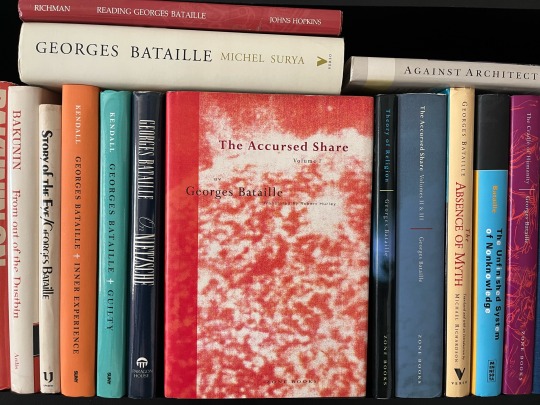
“Sacrifice or Consumption
(…)
Sacrifice restores to the sacred world that which servile use has degraded, rendered profane. Servile use has made a thing (an object) of that which, in a deep sense, is of the same nature as the subject, is in a relation of intimate participation with the subject.
It is not necessary that the sacrifice actually destroy the animal or plant of which man had to make a thing for his use. They must at least be destroyed as things, that is, insofar as they have become things. Destruction is the best means of negating a utilitarian relation between man and the animal or plant. But it rarely goes to the point of holocaust. It is enough that the consumption of the offerings, or the communion, has a meaning that is not reducible to the shared ingestion of food. The victim of the sacrifice cannot be consumed in the same way as a motor uses fuel. What the ritual has the virtue of rediscovering is the intimate participation of the sacrificer and the victim, to which a servile use had put an end. The slave bound to labor and having become the property of another is a thing just as a work animal is a thing. The individual who employs the labor of his prisoner severs the tie that links him to his fellow man. He is not far from the moment when he will sell him. But the owner has not simply made a thing, a commodity, of this property. No one can make a thing of the second self that the slave is without at the same time estranging himself from his own intimate being, without giving himself the limits of a thing.
This should not be considered narrowly: There is no perfect operation, and neither the slave nor the master is entirely reduced to the order of things. The slave is a thing for the owner; he accepts this situation which he prefers to dying; he effectively loses part of his intimate value for himself, for it is not enough to be this or that: One also has to be for others. Similarly, for the slave the owner has ceased to be his fellow man; he is profoundly separated from him; even if his equals continue to see him as a man, even if he is still a man for others, he is now in a world where a man can be merely a thing. The same poverty then extends over human life as extends over the countryside if the weather is overcast. Overcast weather, when the sun is filtered by the clouds and the play of light goes dim, appears to "reduce things to what they are." The error is obvious: What is before me is never anything less than the universe; the universe is not a thing and I am not at all mistaken when I see its brilliance in the sun. But if the sun is hidden I more clearly see the barn, the field, the hedgerow. I no longer see the splendor of the light that played over the barn; rather I see this barn or this hedgerow like a screen between the universe and me.
In the same way, slavery brings into the world the absence of light that is the separate positing of each thing, reduced to the use that it has. Light, or brilliance, manifests the intimacy of life, that which life deeply is, which is perceived by the subject as being true to itself and as the transparency of the universe.
But the reduction of "that which is" to the order of things is not limited to slavery. Slavery is abolished, but we ourselves are aware of the aspects of social life in which man is relegated to the level of things, and we should know that this relegation did not await slavery. From the start, the introduction of labor into the world replaced intimacy, the depth of desire and its free out-breaks, with rational progression, where what matters is no longer the truth of the present moment, but, rather, the subsequent results of operations. The first labor established the world of things, to which the profane world of the Ancients generally corresponds. Once the world of things was posited, man himself became one of the things of this world, at least for the time in which he labored. It is this degradation that man has always tried to escape. In his strange myths, in his cruel rites, man is in search of a lost intimacy from the first.
Religion is this long effort and this anguished quest: It is always a matter of detaching from the real order, from the poverty of things, and of restoring the divine order. The animal or plant that man uses (as if they only had value for him and none for themselves) is restored to the truth of the intimate world; he receives a sacred communication from it, which restores him in turn to interior freedom.
The meaning of this profound freedom is given in destruction, whose essence is to consume profitlessly whatever might remain in the progression of useful works. Sacrifice destroys that which it consecrates. It does not have to destroy as fire does; only the tie that connected the offering to the world of profitable activity is severed, but this separation has the sense of a definitive consumption; the consecrated offering cannot be restored to the real order. This principle opens the way to passionate release; it liberates violence while marking off the domain in which violence reigns absolutely.
The world of intimacy is as antithetical to the real world as immoderation is to moderation, madness to reason, drunkenness to lucidity. There is moderation only in the object, reason only in the identity of the object with itself, lucidity only in the distinct knowledge of objects. The world of the subject is the night: that changeable, infinitely suspect night which, in the sleep of reason, produces monsters. I submit that madness itself gives a rarefied idea of the free "subject," unsubordinated to the "real" order and occupied only with the present. The subject leaves its own domain and subordinates itself to the objects of the real order as soon as it becomes concerned for the future. For the subject is consumption insofar as it is not tied down to work. If I am no longer concerned about "what will be" but about "what is," what reason do I have to keep anything in reserve? I can at once, in disorder, make an instantaneous consumption of all that I possess. This useless consumption is what suits me, once my concern for the morrow is removed. And if I thus consume immoderately, I reveal to my fellow beings that which I am intimately: Consumption is the way in which separate beings communicate. Everything shows through, everything is open and infinite between those who consume intensely. But nothing counts then; violence is released and it breaks forth without limits, as the heat increases.
What ensures the return of the thing to the intimate order is its entry into the hearth of consumption, where the violence no doubt is limited, but never without great difficulty. It is always the purpose of sacrifice to give destruction its due, to save the rest from a mortal danger of contagion. All those who have to do with sacrifice are in danger, but its limited ritual form regularly has the effect of protecting those who offer it.
Sacrifice is heat, in which the intimacy of those who make up the system of common works is rediscovered. Violence is its principle, but the works limit it in time and space; it is subordinated to the concern for uniting and preserving the commonality. The individuals break loose, but a breaking-loose that melts them and blends them indiscriminately with their fellow beings helps to connect them together in the operations of secular time. It is not yet a matter of enterprise, which absorbs the excess forces with a view to the unlimited development of wealth. The works in question only aim at continuance. They only predetermine the limits of the festival (whose renewal is ensured by their fecundity, which has its source in the festival itself. But the community is saved from ruination. The victim is given over to violence.” (p. 55 - 59)
#bataille#georges bataille#accursed share#general economy#general economics#sacrifice#consumption#slavery#aztecs#acephale#acéphale
2 notes
·
View notes
Text
A World Without Colonization
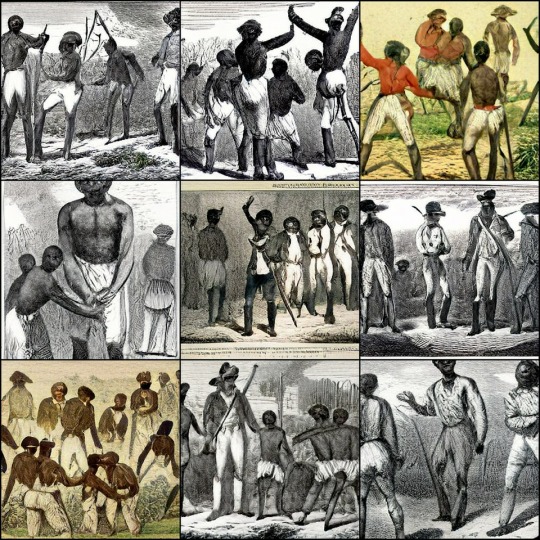
The world as we know it today would be vastly different if it had never been colonized by European powers. Colonization had a profound impact on the societies and cultures of colonized countries, shaping the course of history for countless countries and cultures. In this blog post, we will explore how the world would have been different without colonization in the Americas, Africa, and Asia.
The Americas
If the Americas had never been colonized by European powers, the continent would have developed in a completely different way. The native peoples of the Americas, such as the Aztecs, Incas, and Mayas, would have continued to develop their own societies without interference. These advanced civilizations had developed complex systems of government, agriculture, and trade, and had made significant advancements in architecture, art, and science. Without colonization, these cultures would have likely continued to evolve and flourish.
The arrival of Europeans brought with them diseases that decimated indigenous populations, and destroyed their way of life. Furthermore, the imposition of European culture, religion, and language erased many aspects of the native cultures. Without colonization, these cultures and societies would have been preserved and passed down to future generations.
Africa
In Africa, colonization had a devastating impact on the continent. European powers partitioned and divided up Africa among themselves, leading to exploitation, forced labor, and the displacement of millions of people. The Scramble for Africa in the late 19th century, in which European countries divided the continent among themselves, led to the artificial creation of countries and borders, which often did not correspond to ethnic, linguistic or cultural realities of the native people.
Without colonization, Africa would not have been partitioned and divided up among European powers. This would have allowed African societies to continue to develop on their own without interference, and without the exploitation and forced labor that characterized the colonial period. African societies would have continued to develop their own systems of government, economy, and culture, and would have had the opportunity to shape their own destinies.
Asia
In Asia, colonization had a profound impact on the societies and cultures of colonized countries. European powers established colonies and trading posts in countries such as India, China, and Japan, introducing Western systems of government, economy, and culture. These colonies were often established through force and exploitation, leading to the displacement of millions of people, and the suppression of native cultures.
Without colonization, these countries would have continued to develop their own systems of government, economy, and culture, and would have had the opportunity to shape their own destinies. Furthermore, without colonization, the rich culture and history of these countries would have been preserved and passed down to future generations.
In conclusion, without colonization, the world would be a very different place. The societies and cultures of many countries would have developed in unique ways, free from the influence and control of European powers. Colonization brought modernization and development to the colonized countries, but it also brought destruction, exploitation, and suppression of native cultures. It is important to understand the impact of colonization on the world and how it shaped the world as we know it today
5 notes
·
View notes
Text
JEHOVAH OKCULT BIBLE [JOB] STAR WITNESS 1968-michaelharrelljr.com’s 1st ESOTERIC SKY GOD Eye of Ægiptian THOTH [E.T.] DEEP IN:side IMHOTEP’s Astronomical MARS’ [I AM] Atlantic Thermospheric Ocean Wind Energies [WE] from MERCURY’s Electromagnetic [ME] Ionosphere [MI = MICHAEL] in Astronomical PLUTO's [MAPS] UNSEEN [MU] Ultraviolet Radiation of 144,000 SCORPIUS [MUURS] DNA Constellation [D.C.] FAMILIES of ORION’s Interstellar MAGNETOSPHERE [I’M] of RIGEL RNA AVASTAR.tech MELANIN… since 1968-michaelharrelljr.com’s harrelltut.com Domain Constellation [D.C.] Body of Astronomical JUPITER’s Celestial [JC] NEUROMELANIN… Alkhemically + Genetically Engineered [AGED] kingtutdna.com’s Domain Genetics of Constellation TAURUS... DEEP IN:side Astrological VIRGO’s Mysterious Underground [MU] SKY DOME Heliosphere of Inner Earth’s [HADES] Most Darkest [Occulted] Subterranean Earth Acropolis [SEA] in Ancient THEBES who Unified the Royals of the NILE [SATURN] VALLEY WEALTH ESTATES [WE] of ANU GOLDEN 9 Ether [AGE] Subterranean Pacific Coast [PC] PARADISE Islands w/ABUNDANT MINERAL [I AM] Seafloor Deposits & Gas Economies [SDGE.com] Generationally Managed [GM] by the AZTECS' SWARTHY [GAS] 9 Ether DREAM SPIRITS [DAEMONS] of QUETZALCÓATL’s Interstellar [Qi] BLACK SOLAR SUN [SUL = SOUL] Queen of MESOAMÉRICA’s Antediluvian Coastal [MAC] Territories Underneath TIAMAT’s [TUT’s] Atmospheric Gulf [TAG] Archipelagoes of HAWAII... Geographically ISOLATED Six to 8,000 Feet Underneath MESOAMÉRICA's ŌMETĒCUHTLI & ŌMECIHUĀTL [MÓO] CONTINENT of Antediluvian [CA] HATTUŠA’s Hidden Underground [HU = HURRIAN] SUN EMPIRE of Queen CALAFIA.gov’s... Interplanetary 9 [i9] Ether ALUHUM ANUNNAGI AZTEC SUN City of Subterranean Luz ATLANTIS [L.A.]
WELCOME BACK HOME IMMORTAL [HIM] U.S. MILITARY KING SOLOMON-MICHAEL HARRELL, JR.™

i.b.monk [ibm] mode [i’m] tech [IT] steelecartel.com @ quantumharrelltech.ca.gov

i.b.1698 michael’s [ibm’s] ancient quantum computing military of quantumharrelltech.ca.gov


is imaginary sky god jehovah [archangel michael] an e.t. [aluhum anunnaqi] of the bible???
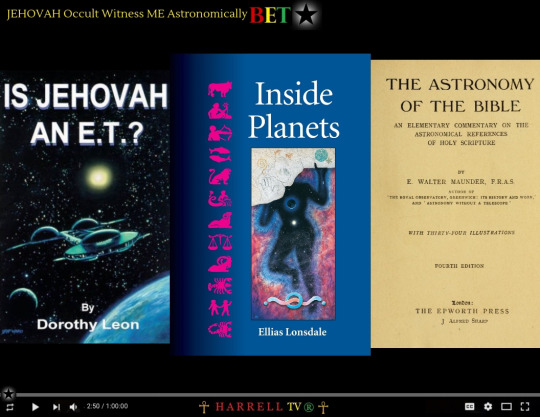
harrell [hell] yea!!!


ancient celestial DNA religion of ægipt = quantum RNA sky sciences of atlantis in amurika [mu]

eye thoth [e.t.] 2
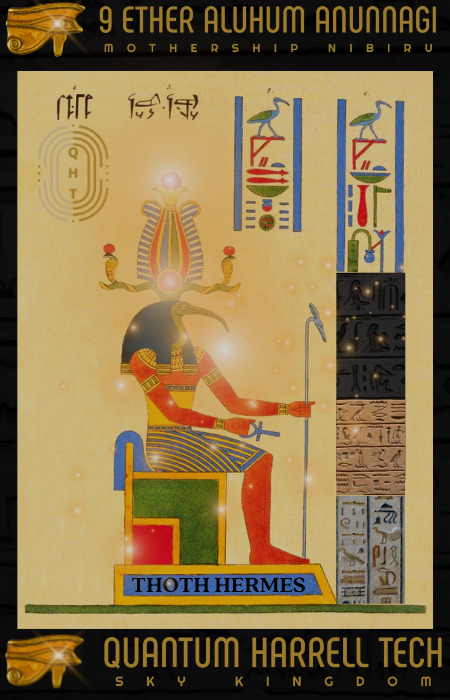
o my god [omg] michael [jehovah] of ægipt [je = jesus]!!!

1968-michaelharrelljr.com quetzalcóatl 2?!?!?!

eye see thy inner sky kingdom dna inside of me
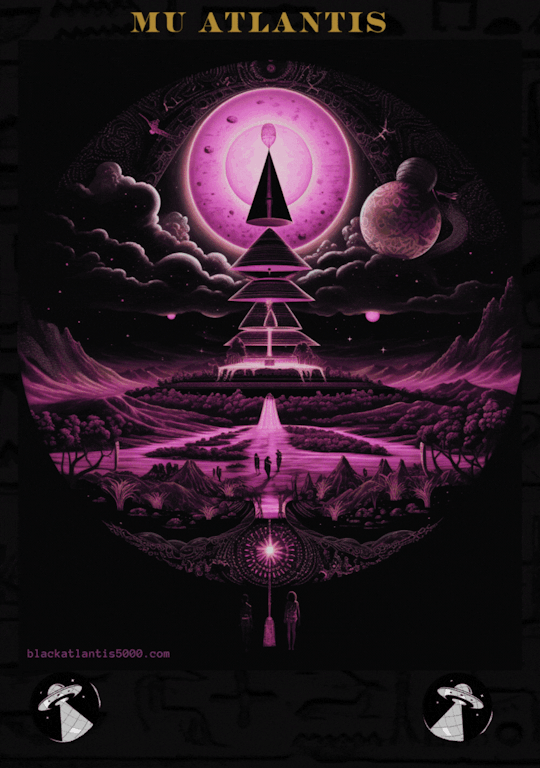
eye esoteric neteru of ancient kemet
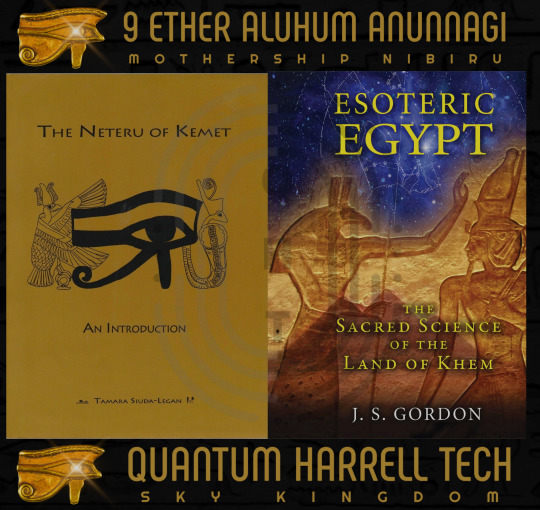
thy constellation orion bloodline kingdom inside me

eye rising sun [iris] of my [i'm] mother's ancient [ma] kemetian order

buckle up artificial america... you about to go down in real time

these mundane temporal humans don't innerstand anything spiritual

eye ancient ægiptian hittite king tutankhamün of luz atlantis [l.a.] in lost amurika [mu]

eye remember my ancient ægiptian atlantean dna [a.d.] hittite peoples in lost amurika [mu]

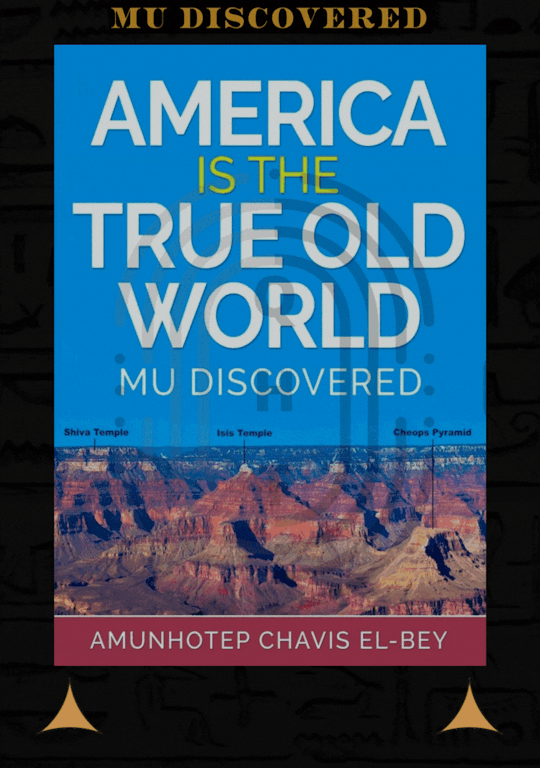

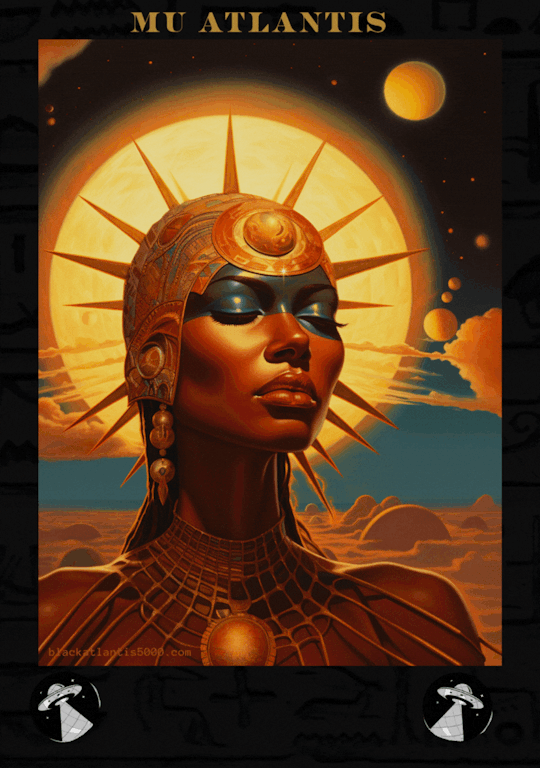
© 1698-2223 QUANTUM HARRELL TECH LLC All LOST ANCIENT [L.A.] ATLANTEAN DNA [A.D.] DotCom [A.D.] + DotTech [A.D.] + Pre 1698quantumharrellgov.tech Domain Name Rights Reserved... since WE ANU GOLDEN ERA [AGE]!!!
#u.s. michael harrell#kingtutdna.com#1968-michaelharrelljr.com#harrelltut.com#o michael#kangsolomon.com#imhotep#thoth#hermes#king tut#quantumharrelltech#kemet#quantumharrelltut#mu:13#ancient aztecs#ancient hittites harrells hurrians#iscribealot.com
1 note
·
View note
Text
Puella Magi Madoka Magica (2011), Bataille, and Self-Sacrifice - SPOILERS
Through the story of Puella Magi Madoka Magica, one of the most poignant themes explored is that of self-sacrifice. All of the primary characters in some way interact with this concept, and it is through these interactions that the story unfolds.
Through this post, I will be examining how Madoka Magica's exploration of self-sacrifice can be understood through Georges Bataille's concept of the accursed share, or the notion of expenditure.
For Bataille, economies are built upon the coexistence of acquisition and expenditure. However, when he writes about economies, he refers to an economy of energy rather than of currency. Living things naturally have an excess of energy, which is what allows them to grow, but some of this energy isn't able to be recuperated into the organism and must therefore be expended without gain. The examples he gives of such expenditures are human sacrifices in ancient Aztec society and wars in modern society.
We can see the opposition of acquisition and expenditure through the characters Sayaka and Kyoko. Sayaka is wholly self-sacrificing, giving her full energy entirely for the sake of others and rejecting gainful acquisition at all costs. On the other hand, Kyoko is entirely self-interested and refuses to allow any potential gain to slip out of her grasp. They represent total dedication to opposite ends of the economy they take part in.
The economy presented in Madoka Magica, of soul gems and grief seeds, despair and hope, is occasionally viewed as analogous to capitalism. I personally agree with this view. Self-sacrifice in opposition to growth is not only looked down upon, but entirely incomprehensible to incubators. The entire reason they started the magical girl project was to stave off the eventual expenditure of all energy left in the universe.
The reason I point this out is to give context to the arc of Kyoko and Sayaka within this reading. Because the system is centered around growth without expenditure, magical girls like Sayaka are doomed for failure. When Kyoko first realized how the system prioritized growth, she decided to entirely reject self-sacrifice so that she could survive within the system. On the other hand, Sayaka completely rejects the system's focus on growth and sacrifices more and more to the point that she becomes a witch. This is similar to how capitalist society engages in expenditure through deadly wars.
The most explicit way that Kyoko and Sayaka demonstrate the disparity of growth and expenditure is in Kyoko's habit of eating, getting enraged when Sayaka rejects food. It is shown as a parallel to her personality as a magical girl: Kyoko refuses to allow food, or energy, to go to waste.
Homura is an interesting character, as she dedicates herself entirely towards the growth of Madoka. She refuses to allow Madoka to sacrifice herself, which results in Madoka having a lot of unsalvageable energy ready to be expended. She is essentially in a loop of constant gift-giving, only allowing personal growth so that it can be pointed towards Madoka. In a sense, she is similar to the Solar Anus which constantly releases energy for others to grow while never receiving any in return. The most interesting part about Homura is that, despite being so driven to sacrificing herself for another, the way she goes about it makes her look like she is entirely self-centered. This again reflects the sun, which is dual natured in its initial appearance as the peak of transcendence and growth, yet once scrutinized is revealed to be a constantly expending object which seeks no growth.
Madoka is differentiated from the other magical girls because of how she engages in self-sacrifice. The way Sayaka and Kyoko interact with the system fail to escape its grasp. This is partially due to the fact that Madoka had a lot more time to consider the path of sacrifice she would eventually choose to go down. Kyoko and Sayaka both began from a point of self-sacrifice within the system, where Madoka set out from the beginning with intention to change the system itself. The incubators had already recuperated Sayaka and Kyoko's sacrifice, whereas Madoka's entirely subverts the Incubators' system without being rejected or neutralized.
I've saved Mami for last because her stay in the show was the shortest, meaning there is not very much we can gleam about her relationship with sacrifice. She acts as a mentor and attempts to guide Sayaka and Madoka into making informed decisions with their sacrifices. When she made the deal with Kyubey, she did it to escape death-- the ultimate act of expenditure. Despite becoming a magical girl to avoid becoming expended, she is similar, though less extreme, to Sayaka. The show suggests that she is what an average magical girl looks like and acts like, with a mixture of expenditure and growth.
4 notes
·
View notes
Note
Mochi! You okay with discussing about the economical system the Aztecs and Incas?
I’m really curious what differed from the two.
From what I know from my fathers explanation, the system the Incas had was much better than monarchy because it wasn’t the top that saying “give this quantity” but more like “what can you give?”
And also because the Incas were more or less isolated, they didn’t really exchange goods with other cultures, there was no real market for the outside so they didn’t stocked up beyond themselves. But hey I still need to read more about that.
While I focused on Mesoamerica during school, I focused primarily on culture and social hierarchies (I was very interested in religion), so I don't actually know a lot about either of their economic systems very well.
A quick fun fact, the correct term is actually Inca, it's used as both plural and singular. For the Aztecs, depending on who you ask and what you're specifically referring to, the Aztecs were the Culhua-Mexica or Mexica. Mexica often refers to the people that first established Tenochtitlan, Texcocah and Texcoco, who made up the rules of the entire empire. Typically, this is who most people refer to when talking about "Aztecs," as the term Aztec also might have included the peoples they conquered, though they are using more correct terms in academia now. They were an empire that included other Nahuatl (the language family and people of Southern Mexico and Central America). The term Aztec comes from a myth that the Mexica fled from their original home of Aztlan from the North, though that's a topic for another day, as there's a lot of debate surrounding it. There's a lot more nuance about it, and the issue of all Nahuatl people in Central Mexico being referred to as Mexica by the Spanish. It's the reason Mexico is called such, though the name doesn't reference the other indigenous of Mexico, such as non-Mexica Nahuatl people and the Maya. But that's like a completely different topic.
I do think it's a disservice to call the Inca isolated, as it sort of brushes over the numerous amount of tribes that made up the empire. It was "isolated" in that the Pacific ocean and the Andes mountains didn't allow for easy outside travel, but the empire is made of up a variety of pre-Incan tribes. Some of them were assimilated into the empire, while others were most likely outright destroyed. We have very little traces of pre-Incan people though, so we don't know much about them.
I dug through my old notes and class slides to try and find some stuff, and below gives a good idea of pre-Incan peoples.

I'll have to get back to you on the economy later, as I have to dig through my old stuff to find the info on it.
6 notes
·
View notes